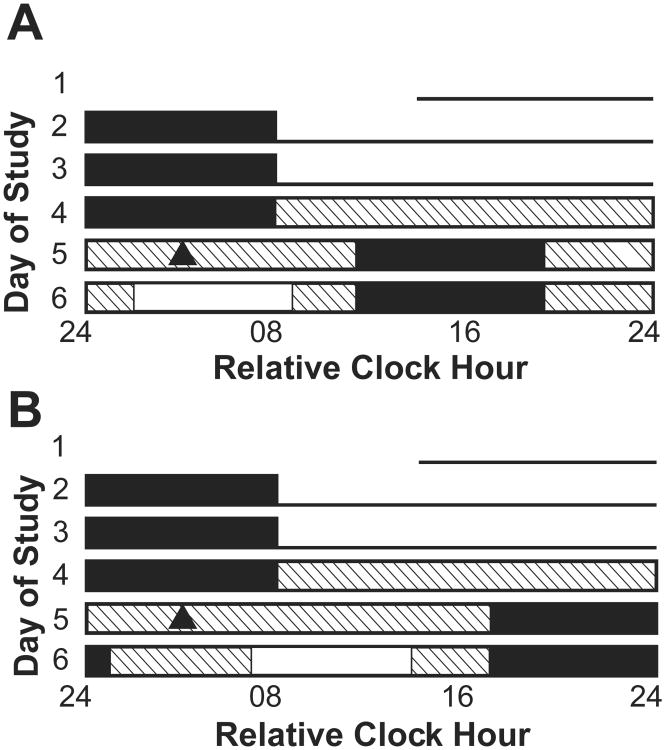Figure 1.
Experimental protocol. Relative clock time with habitual wake time assigned to 0800 h is represented on the horizontal axis and the day of the study is on the vertical axis. Three 24 h baseline days consisted of a habitual sleep-wake cycle including 16 h of scheduled wakefulness with < 150 lux of light intensity (lines) followed by 8 h of scheduled sleep in darkness (filled boxes). Four of the subjects in the dim light condition had their light exposure reduced to ∼1.5 lux on the second half of day 3. On day 4, a constant routine (CR) with a light intensity of ∼3 lux (boxes filled with diagonal lines) was continued until the 8-h sleep episode on day 5. Note that the CR duration for 4 subjects exposed to dim light during the rising phase of the circadian rhythm in cortisol lasted 2 instead of 1 circadian cycle and thus they had another day on the CR compared to other subjects. Day 6 consisted of ∼3 lux during scheduled wake-fulness, except during exposure to the bright (∼10,000 lux) or dim (∼3 lux—no change in intensity) light stimulus (open box) timed either during the rising (A) or descending (B) phase of the cortisol rhythm. Cortisol data used in the current analyses are from the CR on day 5 (baseline) and the light exposure session on day 6. Circadian timing of the average light exposure session for each condition is represented by the time of light exposure relative to the average timing of the melatonin midpoint (closed triangle; also see Materials and Methods).

